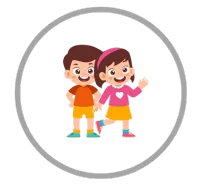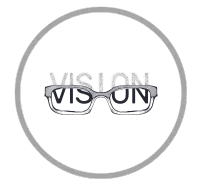Kleinwood Vision Services
Myopia Management: For a Future
We Can All See
Kleinwood Vision Services
Myopia Management: For a Future
We Can All See
FSDAVCFEBFEVSDDVFSD
FSDAVCFEBFEVSDDVFSD
FSDAVCFEBFEVSDDVFSD
Decoding Myopia: Causes and Influencing Factors
A growing body of research highlights the increasing prevalence of myopia, particularly among children. Studies published in leading journals like Nature emphasize how factors such as genetics, ethnicity, prolonged screen time, and reduced outdoor activity contribute to the rise of myopia worldwide. The World Health Organization has classified myopia as a significant public health concern due to its potential to cause severe visual impairment if left unmanaged.
Children in urban environments are experiencing myopia at an alarming rate, with high myopia leading to an increased risk of complications like retinal detachment, glaucoma, and cataracts. Understanding these factors is crucial in developing effective strategies for early intervention and long-term eye health. Our goal is to provide parents with the knowledge and resources needed to help their children navigate the challenges of myopia while preserving their vision.

Research from the American Academy of Ophthalmology suggests that increasing outdoor time can help reduce the risk of myopia progression, particularly for children with a family history of the condition. The National Institutes of Health has also reported a dramatic rise in childhood myopia rates, reinforcing the importance of early detection and treatment. At Kleinwood Vision, we are dedicated to addressing this growing concern with cutting-edge treatments and personalized care plans.
Our myopia management program focuses on early intervention, particularly in The Woodlands and North Houston communities. By identifying myopia at an early stage, we can implement targeted treatments that slow its progression, allowing children to maintain clearer vision as they grow. In addition to clinical treatments, we educate families on the importance of lifestyle adjustments, such as reducing screen time and encouraging outdoor activities, to further support eye health.
We take pride in being a trusted provider of myopia management, offering state-of the-art solutions tailored to each child's unique vision needs. Through a combination of advanced research, innovative technology, and a commitment to patient care, we strive to be the top choice for myopia treatment in our community.
The Expertise Behind Kleinwood Vision’s Myopia Treatment
Kleinwood Vision is a leader in myopia treatment, combining cutting-edge technology with a patient-first approach. From the moment you walk through our doors, our team is committed to delivering the highest level of care through thorough diagnostics and tailored treatment plans designed to slow myopia progression and safeguard long-term vision.
Our diagnostic process utilizes the latest advancements in eye care technology, allowing us to accurately assess the severity and underlying causes of myopia. This detailed evaluation helps us determine the most effective treatment approach for each patient. We offer a range of options, from traditional eyeglasses and contact lenses to more advanced solutions like orthokeratology (Ortho-K) and specially designed multifocal contact lenses. For children with rapidly progressing myopia, we provide atropine eye drop therapy, a clinically proven method for slowing myopia advancement.
Our approach goes beyond simply correcting vision—we focus on comprehensive eye health management to minimize long-term complications. This is particularly important for children, as controlling myopia progression early can significantly reduce the risk of serious vision issues later in life. Our pediatric treatments are designed to be both effective and comfortable, ensuring that young patients receive the best care in a supportive and reassuring environment.
Beyond treatment, we empower families with the knowledge they need to support their child’s vision health. Through education and preventative care strategies, we help parents understand how lifestyle choices can influence myopia progression. Our commitment to patient education and ongoing research makes us a trusted resource for myopia management in Houston and beyond.
Eye Health Risks Associated with Myopia
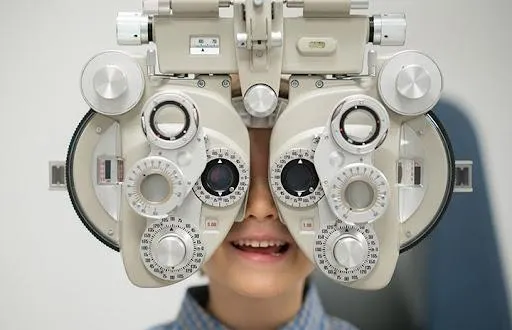
The long-term impact of high myopia extends beyond simple nearsightedness, increasing the risk of serious eye conditions. According to research from the National Institutes of Health, individuals with high myopia face a greater likelihood of developing retinal diseases, glaucoma, and cataracts. Understanding these risks is essential for taking a proactive approach to eye care and ensuring early intervention when needed.
Studies also highlight the genetic and environmental factors that contribute to myopia progression. While some risk factors, such as genetics, cannot be changed, others like excessive screen time and lack of outdoor exposure can be managed to help slow myopia development. By staying informed and proactive, parents can take meaningful steps to protect their child's vision.
To further illustrate the risks associated with high myopia, the Review of Myopia Management provides an easy-to-understand chart outlining the potential complications at various stages of myopia progression. This resource helps parents and healthcare providers grasp the long term consequences of untreated myopia and reinforces the importance of early management.
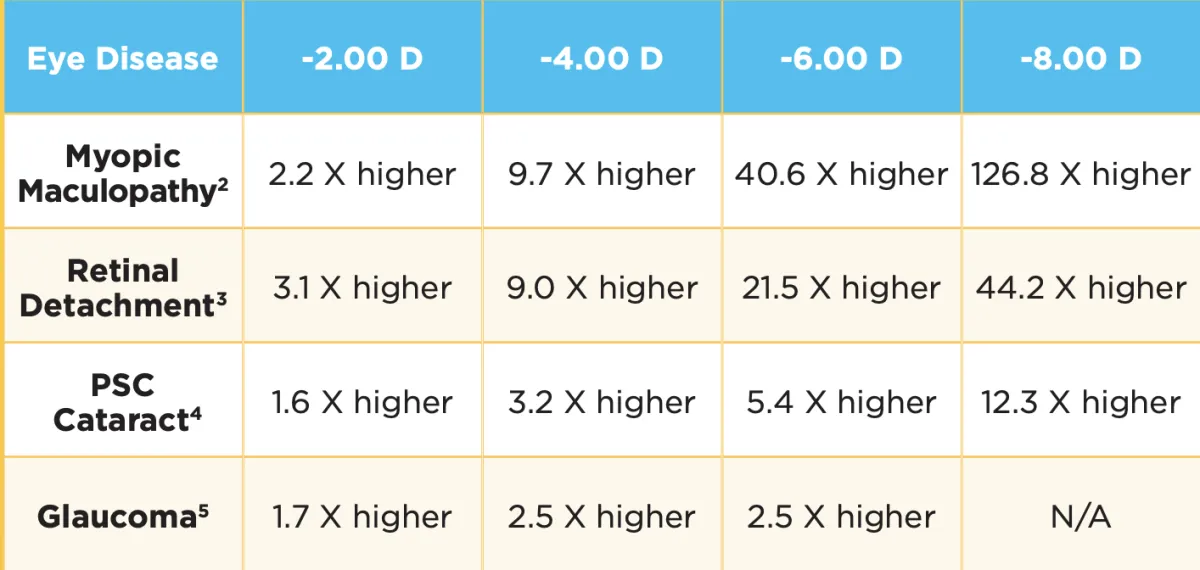
Among the most concerning complications is myopic macular degeneration, a condition that can severely impact central vision. With the increasing prevalence of high myopia, the need for effective intervention has never been greater. At Kleinwood Vision, we are committed to providing cutting-edge solutions to mitigate these risks, helping our patients maintain a clear and healthy vision for life.
Frequently Asked Questions
Frequently Asked Questions
What is myopia, and how does it affect vision?
Myopia, commonly known as nearsightedness, is a condition where distant objects appear blurry while close objects are seen clearly.
How can I find a reputable myopia dr near me in Houston?
You can find a trusted myopia doctor by searching for 'myopia dr near me' or 'myopia eye dr Houston' online, or by visiting Kleinwood Vision for expert care.
What are the signs that my child might need myopia treatment for kids?
Common signs include squinting to see distant objects, sitting too close to the TV, and difficulty seeing the board at school.
Is there a specific myopia dr for kids at Kleinwood Vision?
Yes, Kleinwood Vision has specialists who focus on children with myopia, offering tailored treatments for young patients.
Can myopia be cured or only managed?
While there's no cure for myopia, various myopia treatments can effectively manage the condition and improve vision.
What advanced options does Kleinwood Vision offer for myopia treatment in Houston?
Kleinwood Vision offers a range of advanced options including specialized lenses and orthokeratology, personalized for each patient’s needs.
Can myopia prevention strategies help reduce the risk of myopia in children?
Yes, certain prevention strategies like reducing screen time and increasing outdoor activities can help lower the risk of developing myopia in children.
How does Kleinwood Vision approach myopia eye dr Houston services differently?
Kleinwood Vision combines advanced diagnostic tools with personalized treatment plans, setting them apart as a leading myopia treatment provider in Houston.
What are the benefits of seeking a myopia eye doctor at Kleinwood Vision?
Benefits include access to the latest treatment technologies, personalized care, and a comprehensive approach to managing myopia.
Is myopia more prevalent today, and if so, why?
Yes, the prevalence of myopia is increasing, likely due to lifestyle changes such as increased use of digital devices and less time spent outdoors.
Innovative Myopia Management Options
Embark on a journey through effective myopia management options supported by extensive research. Kleinwood Vision advocates for tailored solutions, understanding that everyone's needs are unique. Custom overnight contact lenses, prescription eye drops, and multifocal soft contact lenses emerge as key players in the fight against myopia progression.
We've explored the effectiveness of custom overnight contact lenses that have the added benefit of clear vision throughout the day without glasses or contact lenses. The American Academy of Ophthalmology's report on prescription eye drops and the American Optometric Association's endorsement of multifocal soft contact lenses provide a comprehensive overview of viable treatment options.

Contact Info
Hours of Operation
Mon - Fri | 9:00 AM - 5:00 PM
Sat - Sun | Closed
Holiday Hours: We are closed for the following holidays: New Years Day, Memorial Day, Independence Day, Labor Day, Thanksgiving Day, Christmas Day
© 2025 Kleinwood Vision. All rights Reserved.
